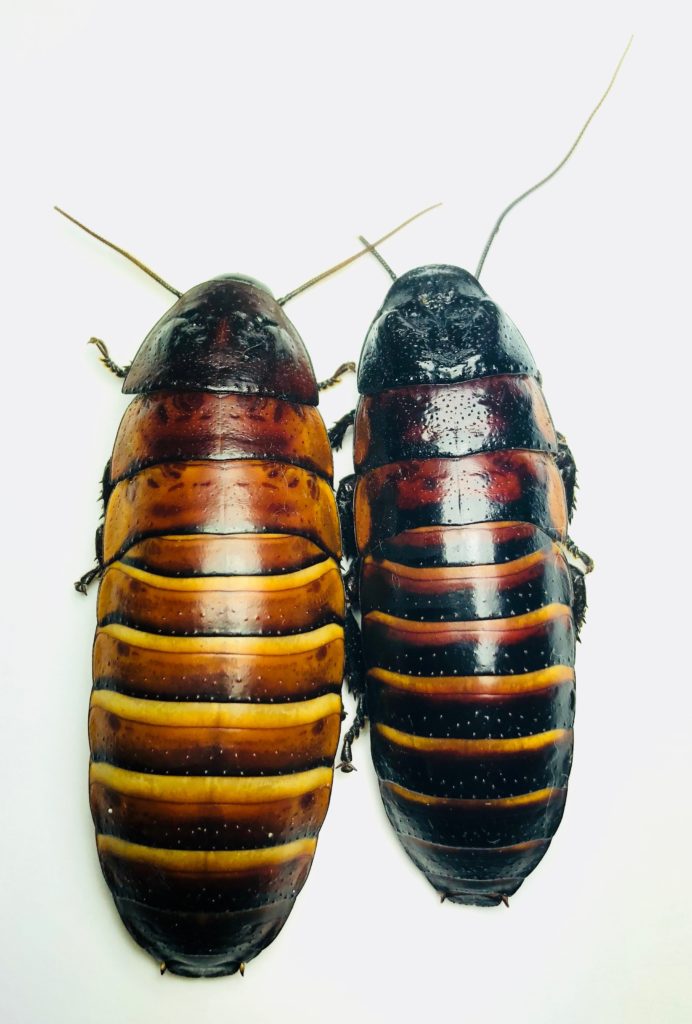Description
V-horn hisser is the largest of the dwarf hisser species in cultivation. It’s ironic that they are even classified as dwarf since they can easily obtain sizes over 2 inches in length. V-horns are stunning to see in person and are boldly marked with rich brown and chestnut colors accented with yellow.
Origin
This species like all hissers originate from the islands of Madagascar. Word has it that a number of people had this species in cultivation and then people realized at some point that only one person was known to possess the last colony. Eventually they were thought to have gone extinct in cultivation because the last colony lost the remaining male and the females eventually died off. Luckily persistent investigation dug up someone who happened to have this species and replenished the market. They are still very very rare in cultivation however.
Reproduction
Females release pheromones when receptive and mate with select males. Males establish the right to mate by pushing each around using bumpy protrusions on the top of the pronotum. Females produce a long yellow egg case (ootheca) that they retain inside their abdomen for about 60 days. Egg cases contain 30-100 plus eggs. The eggs hatch inside the female and the nymphs are then expelled out. Newly emerged nymphs are pure white until there exoskeleton hardens and darkens. Nymphs crowd around a thick secretion that provides initial sustenance. Sometimes if conditions are not optimal, crowded, or nutrition lacking females may “abort” or expel the partially developed ootheca. Reproduction is inhibited if temperatures are not maintained above 80 degrees.
Development
Nymphs go through a period of 6-7 molts over a period of 6-10 months. Development is largely influenced on temperature as well as nutritional quality. Nymphs often eat some or all of their old shed. If the humidity is not maintained molting problems can occur.
Nutrition
Hissing roaches will eat a wide range of produce, however it should be organic and you should avoid foods that naturally contain phytates and oxalates. I find that feeding hissing roaches organic bananas, oranges, and zucchini works well. I prefer to soak a high protein dog puppy food as the roaches can consume it much easier.
Housing
If you have a small colony they should be housed in a small container. They seem to breed best when kept slightly crowded. This also keeps them in close proximity with their food and water. The media that you place them on should be a mixture of peat and well-rotted compost. The mix should be just barely moist and not soggy. Many people use egg cartons, however I have found that using natural pieces of tree bark stacked toward the back to provide lots of shelter promotes breeding and proper humidity naturally. I like to keep the back half of the tank on the heat mat. I will mist the tank or dump water into the back half were it will naturally evaporate and provide humidity.
Rearing notes
V-horns breed well but average 20 nymphs per litter. It seems with this species that more females are produced than males from my experience. I also have noticed that you should avoid feeding them too much fruit as sometimes it seems they gorge themselves to the point that the fruit bloats them and becomes lethal.

